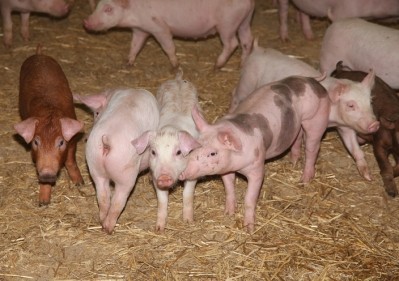CFIA calls for input on proposed aquafeed regulatory changes

The review of the standard for aquafeeds is part of a larger, multi-year regulatory modernization process, said the Canadian Food Inspection Agency (CFIA). The current proposal seeks to review nutrient content standards and identify possible areas for improvement or amendments to the set requirements.
The agency is collecting comment on the proposed aquafeed regulatory changes through March 30.
The overall goal of the regulatory overhaul is to establish a risk- and outcome-based regulatory framework that safeguards feeds and feed production, reduces regulatory burden and sets a balance between “fair and competitive trade in the market,” the agency said.
“Modernization of the regulations provides the opportunity to review feed controls, standards, labelling and other regulatory requirements,” said CFIA.
Feed and aquaculture regulations
Currently feed regulations use a table established to decide if feeds are exempt from mandatory registration, said CFIA. That list set both minimum and maximum nutrient ranges and covered feeds for several production species including salmonid fish.
A feed can be exempted from registration if it is a complete feed that has nutrients that fit within the set ranges on the established table, the agency said. Feeds also could be exempt if a supplement includes in its use directions a way to make a complete feed fit the nutrient guidelines established.
“Feeds that provide nutrients which fall outside the ranges listed in Table 4, and that do not meet any additional exemption criteria, require assessment and registration by the CFIA prior to manufacture and sale,” the agency said.
However, for aquafeeds, the nutrient ranges set only applied to feeds for salmonid species, including salmon and trout, the agency said. The Feed Regulatory Renewal Consolidated Modernization Framework Proposal developed in 2015 suggested that the feed regulations should apply to feeds for all species raised for human consumption – including fish species raised commercially.
“Both the CFIA and stakeholders recognize that some of the values in Table 4 may no longer have the same nutritional relevancy that they did when the table was first introduced,” the agency said. “Stakeholders have also indicated that they feel that Table 4 prevents innovation for new feed products.”
There are some concerns that the maximum nutrient levels established may have a role to play in health and safety, the agency said. Vitamins like A, D and E, can be harmful to animals if fed in overly high amounts and some minerals, like copper, phosphorus and zinc, may produce environmental risks.
“The domestic feed industry considers that the Table 4 nutrient ranges are out of date, and that this table is no longer an appropriate regulatory tool for feeds,” the agency said. “However, there remains a continued need for an enforceable regulatory framework regarding maximum nutrient concentrations in livestock feeds for health and safety reasons.”
Proposed changes
The suggested changes to the established regulation include that the nutrition table no longer be used to indicate when feeds have to be registered and that maximum nutrient levels for a wider range of aquafeeds be established, said the CFIA.
The changes would address the health and safety concern by keeping the maximum nutrient level, the agency said. It also is intended to smooth the entrance of new feed products into the marketplace.
“It is further proposed that minimum levels for nutrients will no longer be established, however, feeds will still be required to be suitable for their intended purpose and must meet an animal's nutritional requirements,” the agency said. “Maximum levels for nutrients will be established initially for families of finned fish raised commercially for human consumption and nutrient maximum levels will be incorporated by reference in the Feeds Regulations to facilitate updating, as necessary.”
The CFIA has been analyzing fish nutritional requirements and the maximum tolerable nutrient levels to establish a limit for nutrients that might have an effect on health and safety of livestock or the environment; that play a nutritional role rather than a therapeutic one; and that produce potentially unsafe residues in food.
“This modernized regulatory approach to the oversight of maximum nutrient content in fish (marine and freshwater) feeds would give regulated industry the flexibility to manufacture feeds with nutrient contents that meet their customers' needs without requiring pre-market assessment and authorization,” the agency said.
It also is anticipated that the change to the current regulatory practices would allow CFIA to keep regulatory oversight for hazards, allow for quicker updates to the standards as new information is discovered and reduce the regulatory burden on industry members attempting to introduce new products, the agency said.














